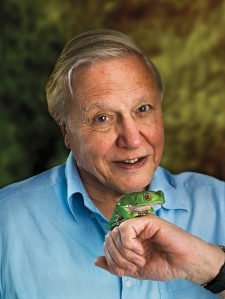 “This last chapter .. may have given the impression that somehow man is the ultimate triumph of evolution, that all these millions of years of development have had no purpose other than to put him on earth. There is no scientific evidence whatever to support such a view and no reason to suppose that our stay here will be any more permanent than that of the dinosaur.” ― David Attenborough, Life on Earth
“This last chapter .. may have given the impression that somehow man is the ultimate triumph of evolution, that all these millions of years of development have had no purpose other than to put him on earth. There is no scientific evidence whatever to support such a view and no reason to suppose that our stay here will be any more permanent than that of the dinosaur.” ― David Attenborough, Life on Earth
Biocentrism is one of the central views within environmental ethics, and the quote of the famous naturalist and broadcaster David Attenborough captures some of its essence, namely the belief that humans are only one element in the ecosystem (Guha 1989:74). How does this affect our relationship with other living beings? Does this imply that that we should consider all living beings when dealing with the environment?
A value in themselves
According to biocentrists the answer is yes. All living creatures should be taken into consideration when we make decisions and moral judgments. Why? Because according to biocentrism, conscious or not, all beings have a value in themselves, what is referred to as intrinsic value. It is on this basis, that all living beings possess this value, biocentrists argue that non-human beings should also be taken into consideration (Brennan, Andrew, Yeuk-Sze Lo 2008).
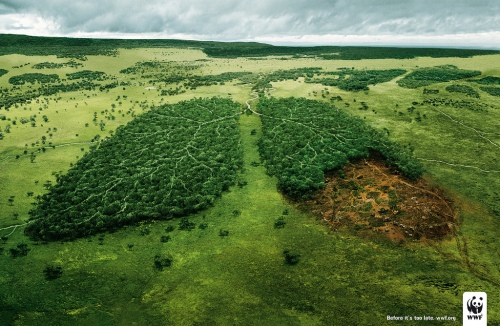
Let’s take an example of what this implies. Politicians might make policy decisions that affect deforestation. The involved parties are not limited only to people living in the affected area, and the consequences extend beyond how the possible rise of Co2 levels may harm our lives and society at large. It also involves the myriad of plants, animals, and other living beings in that area.
In other words, the purpose of protecting the rainforest not only has to do with how the benefits of biodiversity might serve us, preventing an even further rise in Co2 emissions, finding plants that can be used within medicine, or preserving it so that we can visit the exotic rainforest for a vacation out of the ordinary. No, it’s because all living individuals have a value in themselves, and they should therefore all be taken into account.
Individuals
 Another characteristic of biocentrists, though there are exceptions, is that they locate moral standing in individual creatures, and not species, groups or ecosystems. When it comes to the latter, they are considered only of instrumental value, meaning they provide a way through which individuals can achieve their own good (Guha 1989). This suggests that the protection of lemurs on Madagascar cannot exclusively be contributed to fearing the extinction of the species as a whole. It is because of each and every one of the lemurs in question that we should try to protect the species.
Another characteristic of biocentrists, though there are exceptions, is that they locate moral standing in individual creatures, and not species, groups or ecosystems. When it comes to the latter, they are considered only of instrumental value, meaning they provide a way through which individuals can achieve their own good (Guha 1989). This suggests that the protection of lemurs on Madagascar cannot exclusively be contributed to fearing the extinction of the species as a whole. It is because of each and every one of the lemurs in question that we should try to protect the species.
Differences
So, how do biocentrists justify their claims? There is no singular answer to this question because within biocentrism we find different nuances and arguments. Some claim that living beings differ in value, using measurements such as consciousness and rationality. Those who are not considered sentient, like microorganisms and plants, possess a minimal amount of intrinsic value, while human beings with their capacity for rational thought are at the top of the ranking order. Others claim that all creatures possess the same amount of worth, making humans and trees equals regarding their intrinsic value. There is also a difference in what arguments biocentrists use to justify why all living creatures should have a moral standing, and where they stand relative to the intuitive idea most have, that human interest should be favored in certain circumstances at the expense of other living organisms.
Happiness and satisfaction
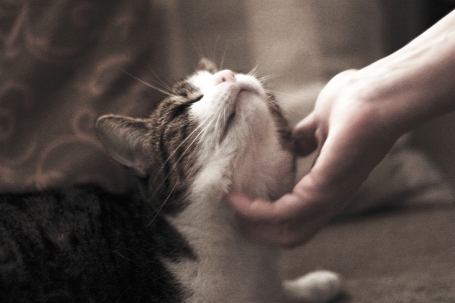 There are for instance those who advocate a utilitarian form of biocentrism, a field within ethics that focuses on happiness and satisfaction as one of the central aspects to consider when making moral judgments. Gary Varner is one of them, claiming that all living beings have needs, and the satisfaction of these needs creates intrinsic value. By saying satisfaction creates intrinsic value he means that it makes the world a better place in general, whether or not the living being in question has importance to others (Varner 2002). Subsequently, my cat should have her needs satisfied because this increases the welfare of the world in total, regardless of the happiness I feel when she lies across my lap purring. The same applies for unconscious beings, like the trees I might employ to anchor each end of my hammock. Satisfying their need for rich soil and sunlight will benefit the level of happiness in the world as well.
There are for instance those who advocate a utilitarian form of biocentrism, a field within ethics that focuses on happiness and satisfaction as one of the central aspects to consider when making moral judgments. Gary Varner is one of them, claiming that all living beings have needs, and the satisfaction of these needs creates intrinsic value. By saying satisfaction creates intrinsic value he means that it makes the world a better place in general, whether or not the living being in question has importance to others (Varner 2002). Subsequently, my cat should have her needs satisfied because this increases the welfare of the world in total, regardless of the happiness I feel when she lies across my lap purring. The same applies for unconscious beings, like the trees I might employ to anchor each end of my hammock. Satisfying their need for rich soil and sunlight will benefit the level of happiness in the world as well.
Having a good of their own
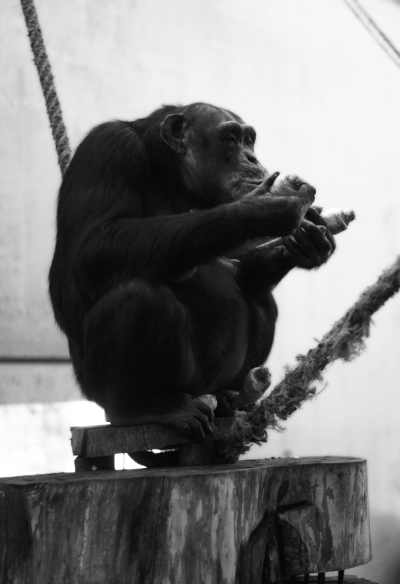 Another view is that of Paul Taylor, who has a deontological approach to biocentrism, which implies that for the most part an action is right or wrong independently of whether its consequences are good or bad. Deontologists may appeal to the intrinsic value of those beings to whom it applies, and according to Taylor all living beings have an equal amount of intrinsic worth by having a good of their own and having the ability to be harmed and benefited. This entitles them to moral respect, and thereby a moral duty on our part to preserve or promote their wellbeing as an end in itself. Consequently, any practices which treat those beings as mere means and thus display a lack of respect for them are intrinsically wrong (Taylor 2011, Andrew, Yeuk-Sze Lo 2008). We have a duty, within the limits of our ability, to make sure animals can live in their natural habitat by working towards wildlife preservation, countering illegal hunting etc., and it is disrespectful when we capture them for the sole reason of keeping them as pets.
Another view is that of Paul Taylor, who has a deontological approach to biocentrism, which implies that for the most part an action is right or wrong independently of whether its consequences are good or bad. Deontologists may appeal to the intrinsic value of those beings to whom it applies, and according to Taylor all living beings have an equal amount of intrinsic worth by having a good of their own and having the ability to be harmed and benefited. This entitles them to moral respect, and thereby a moral duty on our part to preserve or promote their wellbeing as an end in itself. Consequently, any practices which treat those beings as mere means and thus display a lack of respect for them are intrinsically wrong (Taylor 2011, Andrew, Yeuk-Sze Lo 2008). We have a duty, within the limits of our ability, to make sure animals can live in their natural habitat by working towards wildlife preservation, countering illegal hunting etc., and it is disrespectful when we capture them for the sole reason of keeping them as pets.
Constraints
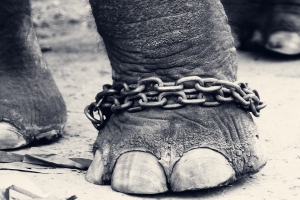 James Sterba, alongside Taylor argues that all living beings having equal moral worth by which he means that no one individual is superior to another, and no one has a right to dominate others (Sterba 1998, 1995).
James Sterba, alongside Taylor argues that all living beings having equal moral worth by which he means that no one individual is superior to another, and no one has a right to dominate others (Sterba 1998, 1995).
A cat is not superior to a plant, and a human is not superior to nor has the right to dominate the other two. Agreeing with Taylor, he says that moral subjects should be able to be harmed and benefited and have a good of their own. In addition he argues that what has to be taken into consideration when discussing the moral worth of living beings is what the environmental ethics actually concerns itself with. This, according to him, is the human relationship with nature, and the restrictions we as moral agents should abide by when interacting with other living beings.
 He does not want to specify the moral subjects in terms of the factual characteristics of those in question, instead, he identifies these by considering how a living being ought to constrain the way moral agents’ exploits the being to pursue their own interests (Sterba 1998). A cat is not primarily a moral subject because of its ability to feel pain and desire, and similarly, a tree does not have moral worth because it performs photosynthesis to fuel itself. Rather, the moral worth they possess is implied by asserting that it is reasonable for us to constrain our actions towards them; like refraining from inflicting unnecessary harm by torturing the cat or chopping down the tree for the pure fun of it.
He does not want to specify the moral subjects in terms of the factual characteristics of those in question, instead, he identifies these by considering how a living being ought to constrain the way moral agents’ exploits the being to pursue their own interests (Sterba 1998). A cat is not primarily a moral subject because of its ability to feel pain and desire, and similarly, a tree does not have moral worth because it performs photosynthesis to fuel itself. Rather, the moral worth they possess is implied by asserting that it is reasonable for us to constrain our actions towards them; like refraining from inflicting unnecessary harm by torturing the cat or chopping down the tree for the pure fun of it.

While arguing that each individual living organism is a moral subject, Sterba differs from most biocentrists by simultaneously arguing that entire species and ecosystems are moral subjects as well. By doing this he moves towards uniting biocentrism, which focuses on individual living beings as morally considerable, with holism which focuses on species and ecosystem as the primary entities worthy of moral consideration (Sterba 1995). 
If you are interested in this discussion I would recommend reading Aldo Leopold’s “A Sand County Almanac”, “In defense of the Land Ethic” by J. Barid Calliott, and the works of James Sterba and Paul Taylor. However, as it is not a part of my thesis, I will not have the opportunity to present it to you here.
If you want a more detailed account of the different theories I recommend you to check out the literature listed on Goodreads, and the references below.
References
- Attenborough, David Life on Earth quote available at http://www.goodreads.com/author/show/106444.David_Attenborough
- Guha, Ramaehandra 1984 “Radical American Environmentalism and Wilderness Preservation: A Third World Critique” Environmental Ethics Vol.11
- Brennan, Andrew, Yeuk-Sze Lo 2008. “Environmental Ethics” Available at Standford Encyclopedia of Philosophy
- Sterba, James P. 1995 «From Biocentric Individualism to Biocentric Pluralism» Environmental Ethics 17 (2):191-207 (1995) Philosophy Documentation Center
- Sterba, James P. 1998 ”A Biocentrist Strikes Back” Environmental Ethics 20 (4):361-376 (1998) Philosophy Documentation Center
- Taylor, Paul 2011 Respect of Nature A Theory of Environmental Ethics Prinston: Prinston University Press
- Varner Gary 2002 “Biocentric Individualism” In David Schimdtz and Elizabeth Willott eds., Environmental Ethics: What really Matters, What really Works Oxford University Press 2002 pp.108 -120
Pictures
- David Attenborough: JrScientist, (CC BY 2.0)
- Rainforest: Brett Jordan, (CC BY 2.0)
- Lemur: Jay8g (CC BY-SA)
- Cat: Cecilie Skogheim Amundsen
-
Chimpanzee: Cecilie Skogheim Amundsen
- Ëlephant: Vinoth Chandar , (CC BY 2.0)
- Woman and cat: Cecilie Skogheim Amundsen
- Chopped down tree: andresmh, (CC BY-SA 2.0)
- A Sand County Almanac: Chris Drumm, (CC BY 2.0)







